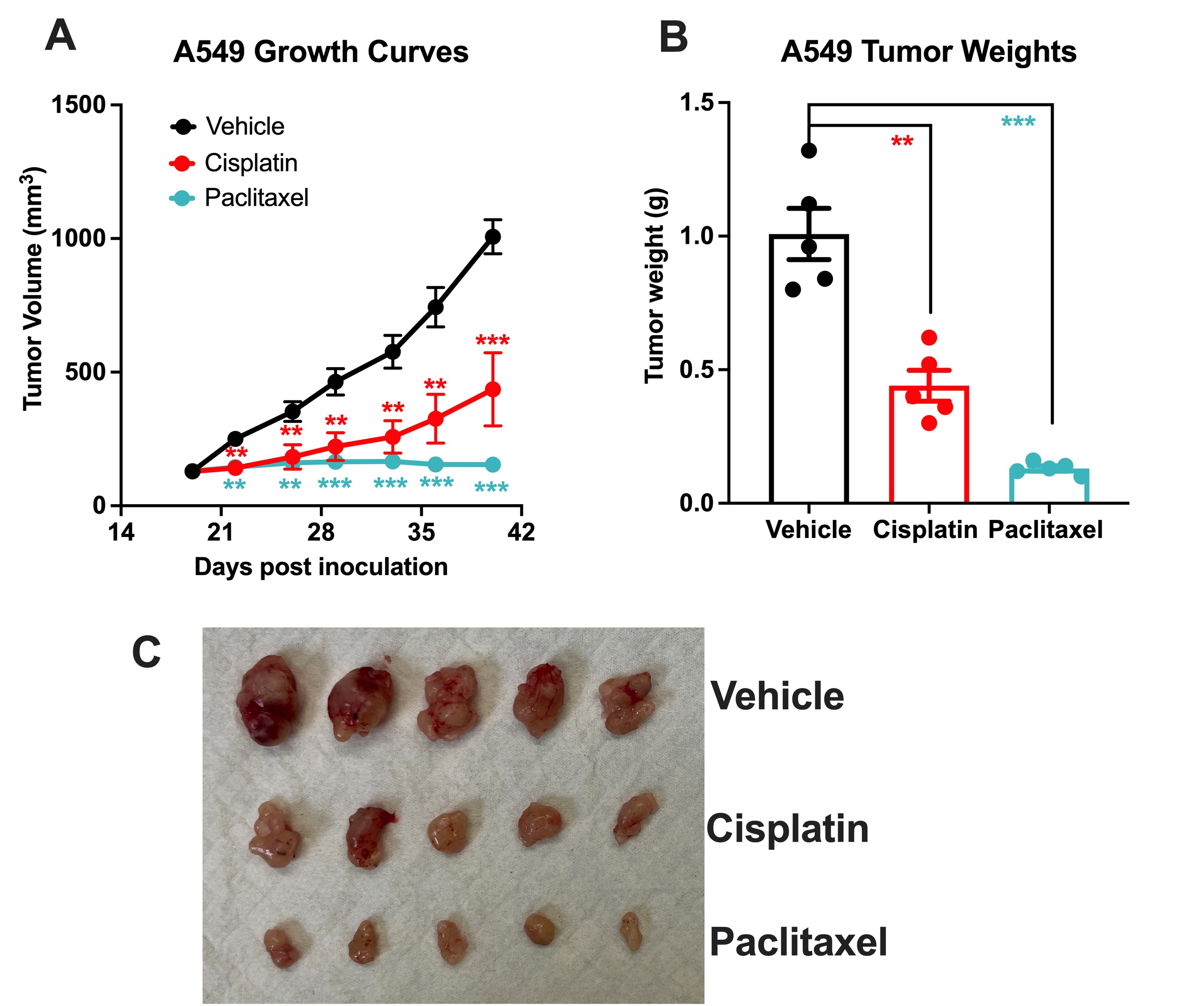Lung Cancer Model - A549 Xenograft
Discover how Melior’s unique phenotypic screening platforms can uncover the untapped value of your candidate therapeutic
Lung cancer is one of the most common and aggressive forms of cancer, causing significant mortality and morbidity worldwide. It is often diagnosed in the later stages of the disease, which makes it difficult to treat and results in poor prognosis.
While surgery is a preferred first-line treatment for early-stage lung cancer and can result in complete removal of the tumor, radiotherapy, chemotherapy or the combination of the two chemotherapy is typically used for advanced or metastatic disease.
More recent developments involve targeted therapeutic therapies that specifically target specific molecular changes in cancer cells that drive the growth and spread of the disease. Drugs such as tyrosine kinase inhibitors (TKIs) can block the action of specific proteins that are involved in the growth and survival of cancer cells and have led to improved outcomes for patients with certain types of lung cancer. Immunotherapy, such as checkpoint inhibition, harnesses the power of the immune system to attack cancer cells. Checkpoint inhibition has been particularly successful in improving outcomes for patients with non-small cell lung cancer (NSCLC).
Despite these advances, there remains a significant medical need for new therapies of lung cancer. The prognosis for patients with advanced lung cancer remains poor, and many patients experience significant side effects from treatment. The development of new, effective and well-tolerated treatments is an urgent priority, and ongoing research efforts are aimed at improving outcomes for patients with lung cancer. Melior’s human lung cancer models are an important tool towards this end.
The A549 cell line is a well-established and widely human cell line used to form a xenograft lung cancer model, particularly non-small cell lung cancer (NSCLC). This xenograft model, which employs human-derived tumor cells (A549) is complementary to Melior’s syngeneic lung cancer model which uses mouse LLC cells. The A549 cell line was derived from a human lung adenocarcinoma and has been used in numerous studies to investigate various aspects of lung cancer biology, including cell proliferation, apoptosis, angiogenesis, drug resistance, and the mechanisms of action of various anti-cancer agents. One of the key advantages of the A549 xenograft model is its ability to mimic the behavior of NSCLC tumors, including their growth characteristics, invasive properties, and resistance to chemotherapy. This makes the A549 cell line a valuable tool for preclinical drug testing and for evaluating the efficacy of new therapeutic strategies.
Chemotherapy validation in human lung cancer A549 xenograft model. 5 x106 A549 cells were subcutaneously injected into the rear flank of nude mice. Once the tumor size reached ~100mm3 (Day19), mice were randomized into vehicle control group (treated with normal saline), paclitaxel (20 mg/kg, IP twice/week) and cisplatin group (3 mg/kg, IP twice/week). Tumor volume was monitored twice per week using calipers (A). At the end of the study (Day 40), animals were sacrificed, tumors excised and weighed (B, C). Data are mean ± SEM; n=5 /group; ** P<0.01, *** P<0.001 by Student’s t-test.
Melior can initiate your A549 xenograft model study with very short lead times and with bespoke study design to suit your needs. Including time to establish tumor-bearing mice (3 weeks) and typical treatment times (3-4 weeks) these studies normally run for approximately 7-8 weeks.
References
1. American Cancer Society. (2021). Lung Cancer https://www.cancer.org/cancer/lung-cancer.html




 Interested in running a human lung cancer model study?
Interested in running a human lung cancer model study?